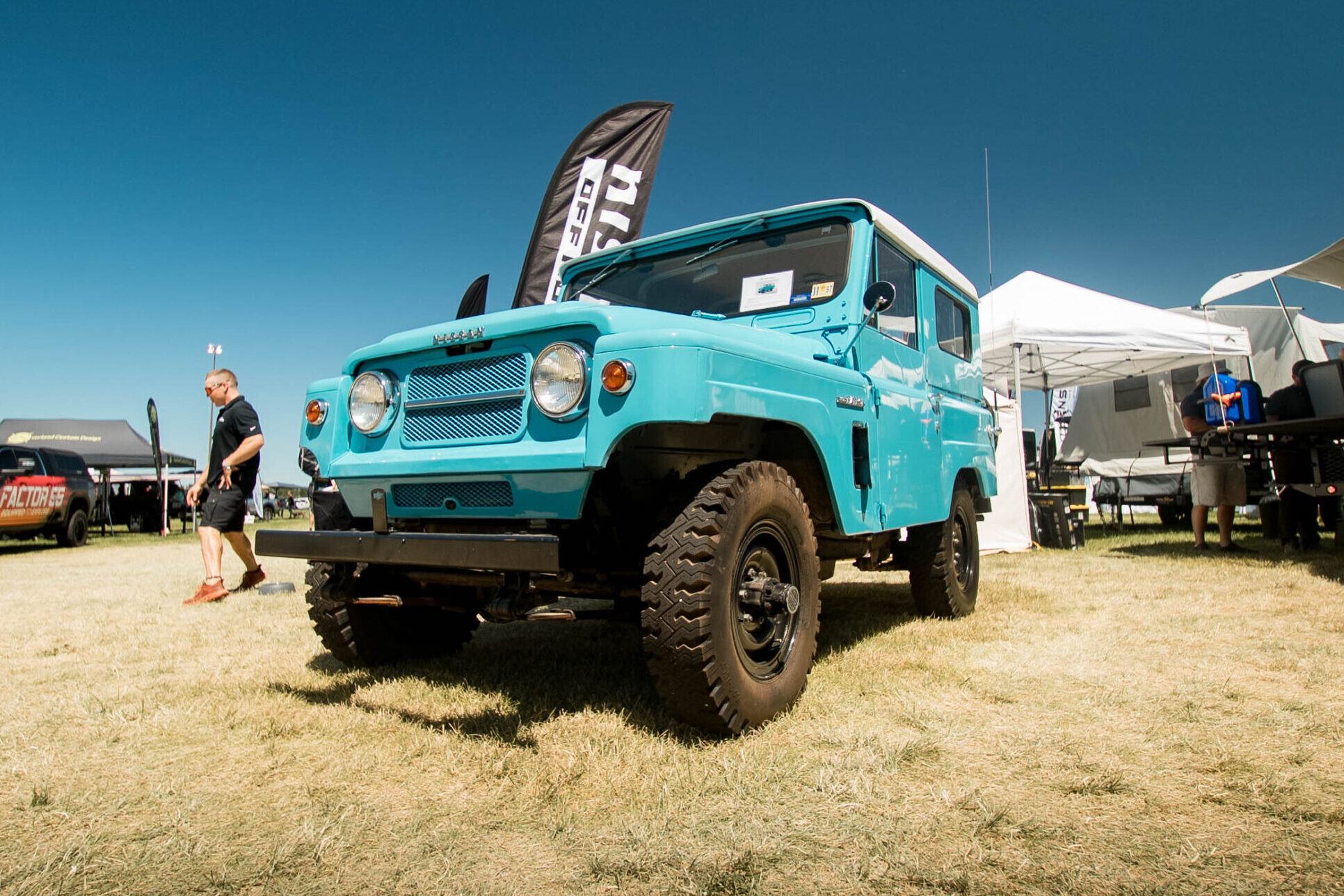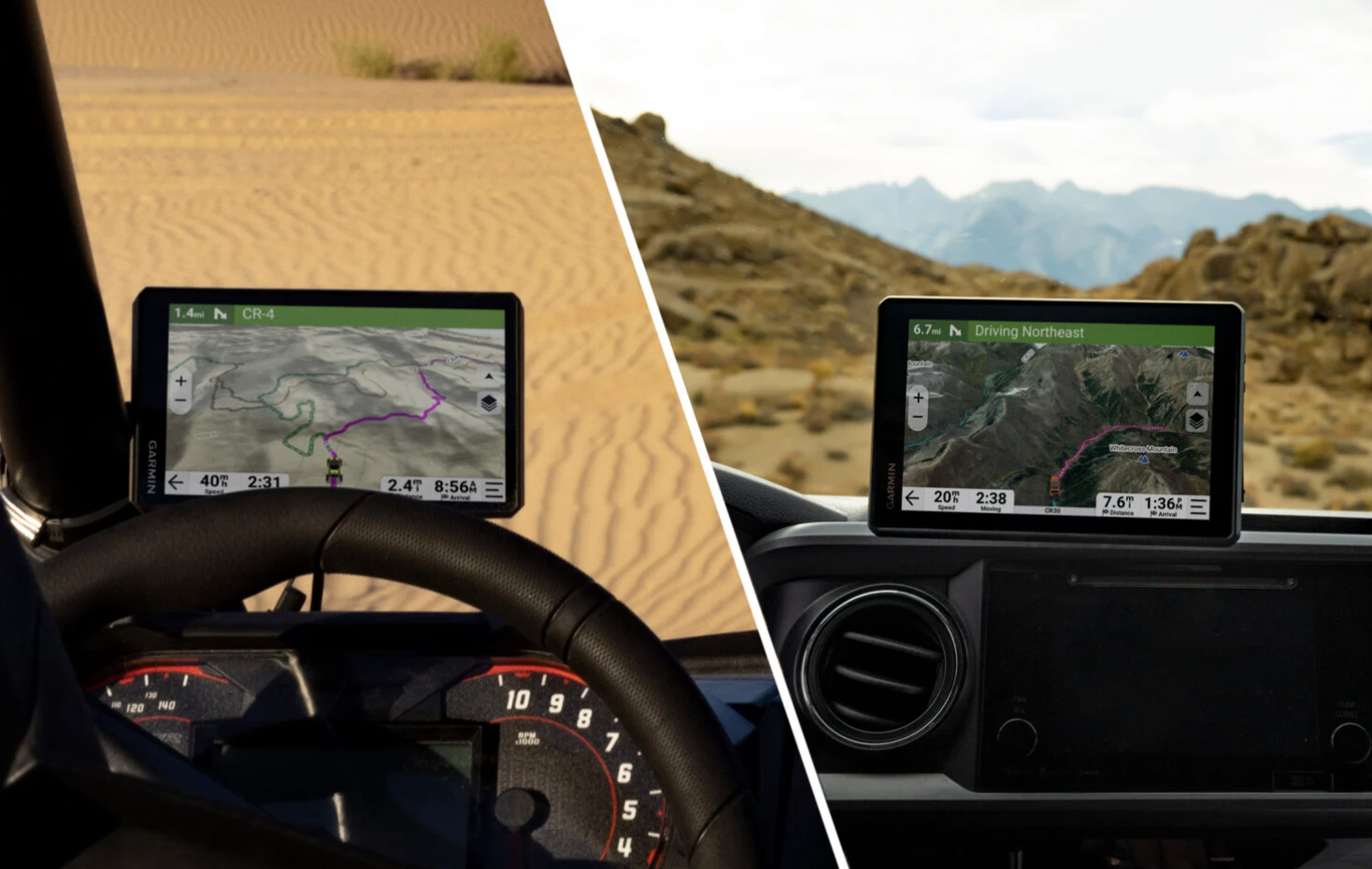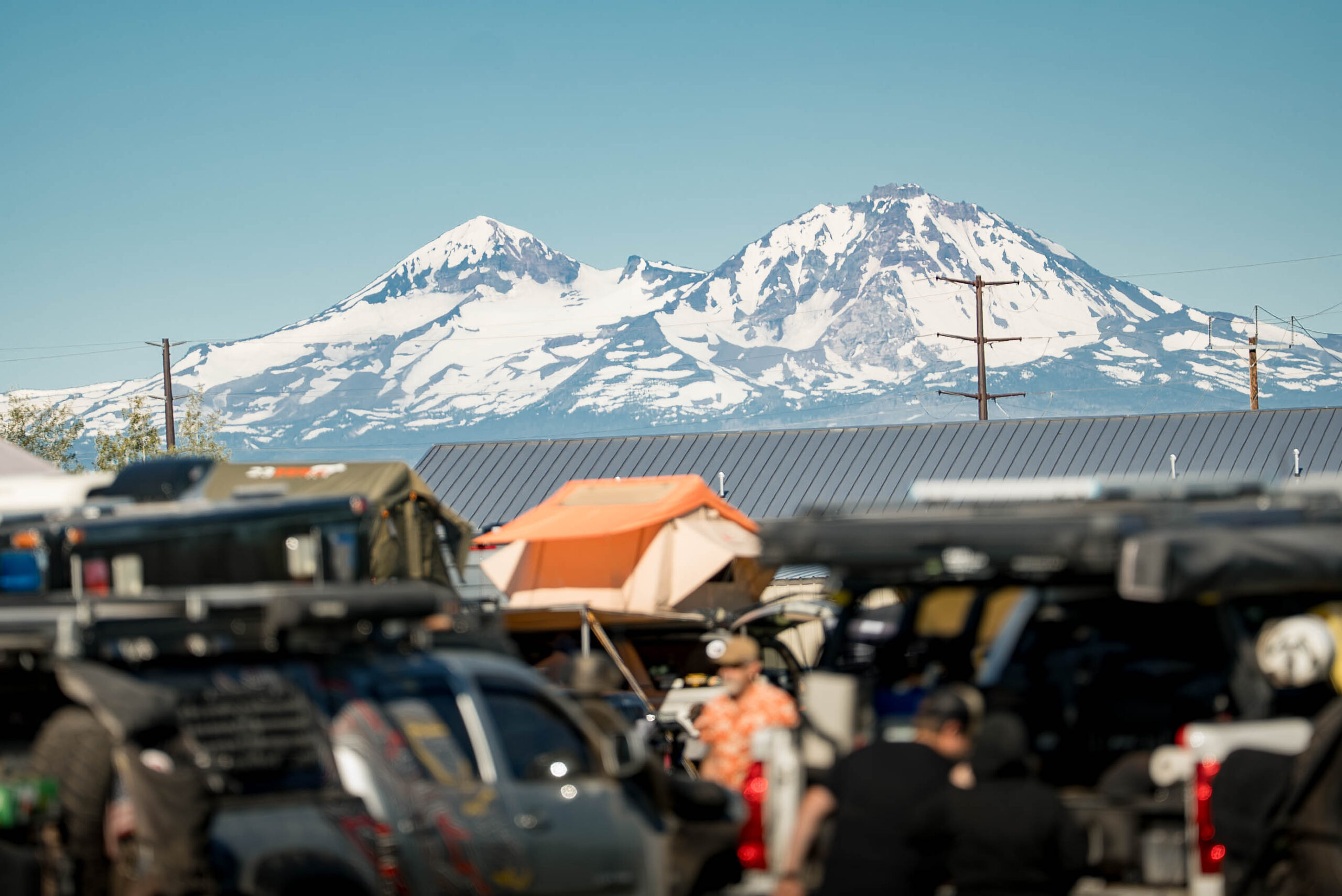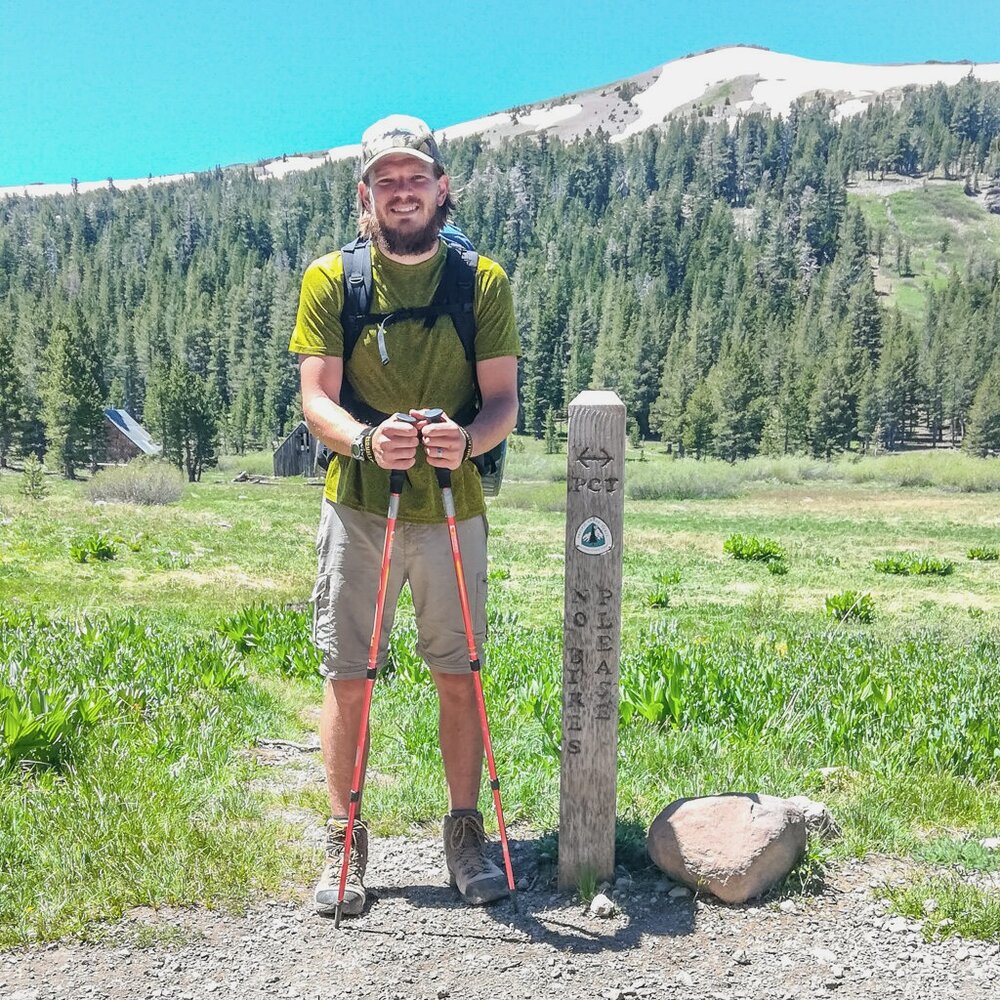
OUTLANDISH OVERLANDER
OUTLANDISH OVERLANDER IS A BLOG HOSTED BY OVERLAND EXPO VOLUNTEER COORDINATOR, ZACH ELSEMAN.
FOLLOW ZACH @OKIENOMADS.
I need to clear this up before we get to the good stuff: My wife and I live full-time in a school bus conversion, by choice. We love the freedom and simplicity that comes from a life with 78 square-feet of living space and having the whole world as our playground. That being said, there are aspects of traveling in an outlandish vehicle that we did not expect. We continually meet travelers on the road that share these sentiments about their school buses, ambulances, and other outlandish and unique rigs too, so we knew we were not alone.
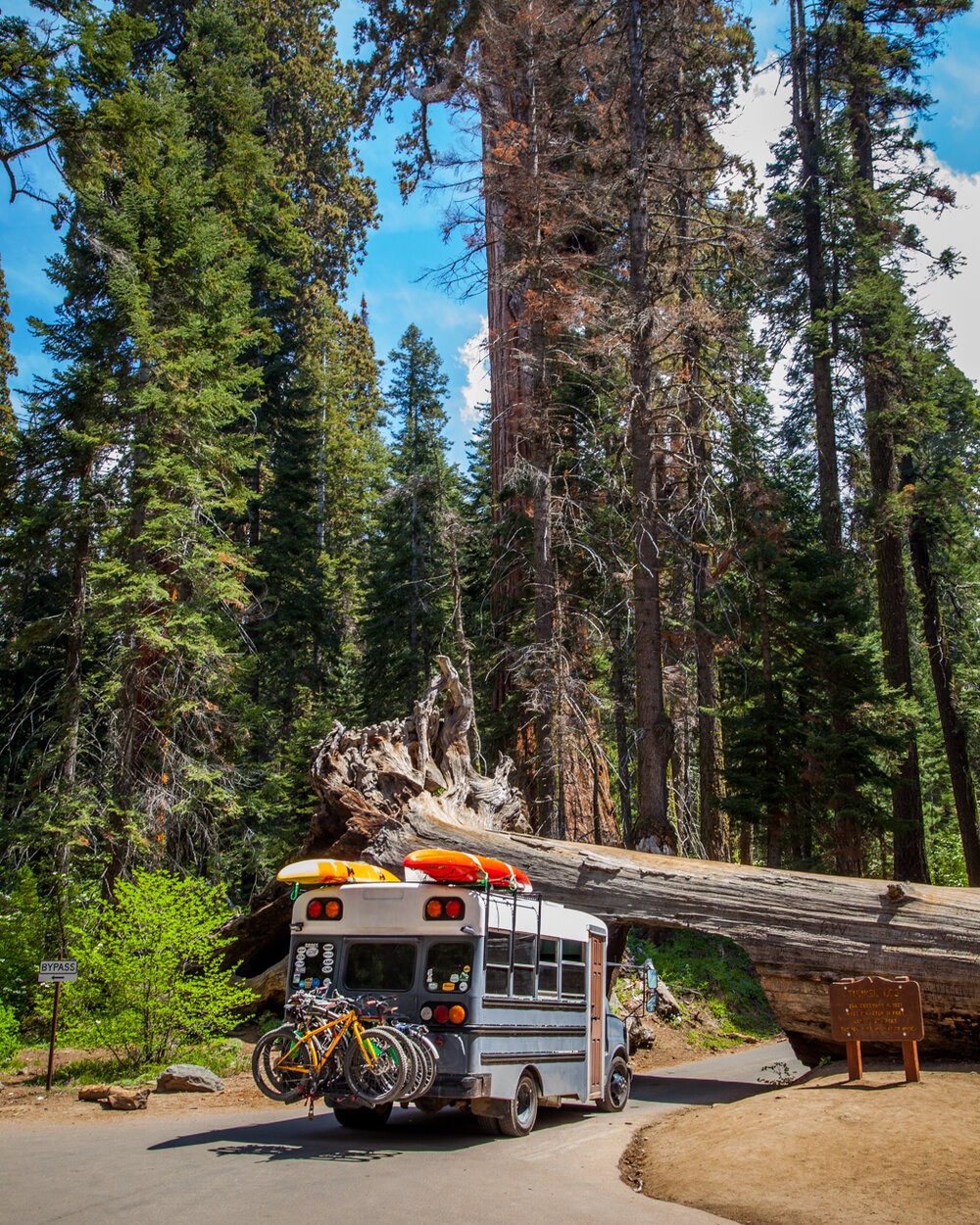
Most Outlandish Vehicles are BIG
Even if you purchase the smallest modern school bus (which we did) it is still 20-22 feet long, eight feet wide, and over nine feet tall. After we gutted the interior, built out the inside, and filled up our water and fuel tanks, our bus weighs over four tons — very close to the manufacturer’s gross vehicle weight rating (GVWR). The size of these metal behemoths makes them difficult to navigate down narrow four-wheel-drive trails and some forest service roads and the height and width can also make traveling through some tunnels equally as difficult. The tunnel entering Zion National Park from the East was going to charge us $20 to pass through their tunnel, luckily, we had time to spare and drove around the southern end of the park to enjoy Pink Sand Dunes State Park instead and entered Zion from the West.
Situations have presented themselves where we have wanted to air down and follow our 4×4 friends on to the beach to play and camp in the sand. But after having thought twice about it, we decided against it. Unless you have four-wheel drive (pretty rare and/or expensive comparatively), reliable recovery gear, and some know-how, you are going to get stuck. Expect to need a fairly large truck or tractor to pull your 10,000+pound (4,536 Kg) butt out of the dunes.
Some skoolies can reach lengths of 40 or more feet (4.2 meters) and over 30,000 pounds (13,600 Kg) and at that point, forget about going very far off the pavement and parking in any parking lot other than a big box store like Wal-Mart.
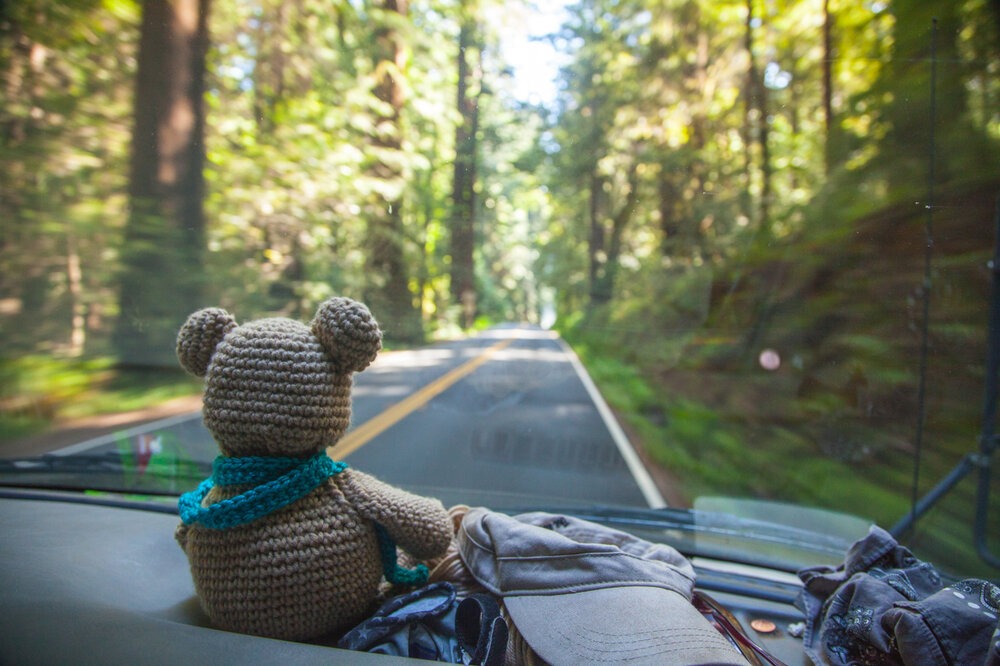
Service Vehicles are SLOW!
While we are on the topic of driving slowly, expect to drive slowly … very slowly. Unless you commit significant amounts of money to increase your busses horsepower and torque, your bus will probably be underpowered. Expect to travel at speeds much slower than traffic around you and commit a lot of time to making the extremely coveted left turn across traffic or to pass a Volkswagen van traveling slower than you are.
If you read Part 2 of this post, you will see that this point also shows up as a positive of traveling in a retired service vehicle. Hop on over to that article to find out why.
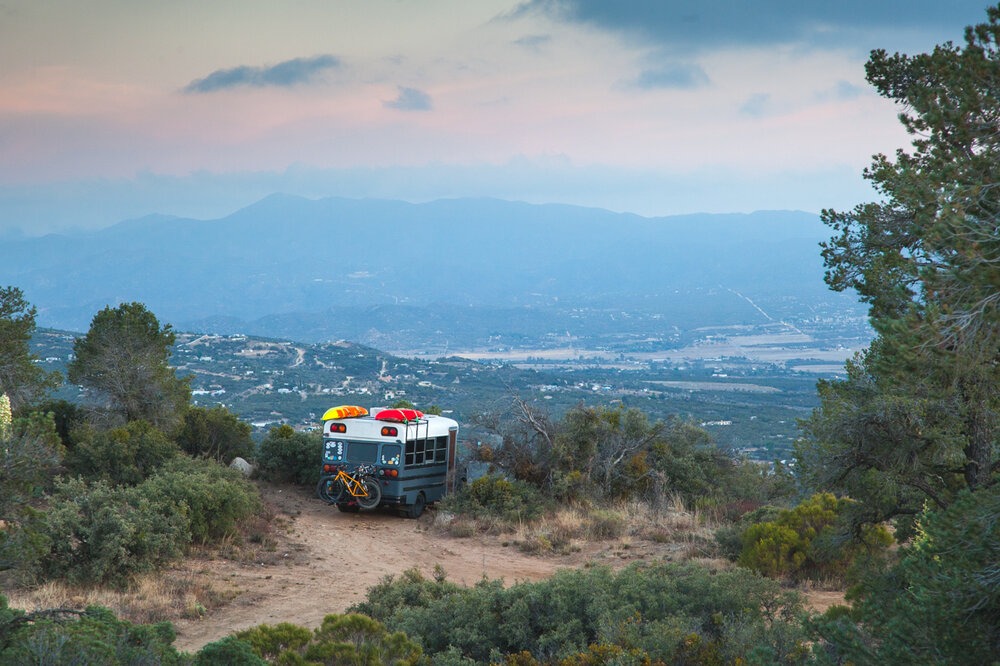
School Buses, Ambulances, and Military Vehicles are not built for comfort.
Think back to when you were a child and you rode the bus to school. If you were one of those kids whose mother’s coddled them with a ride to school in your SUV, just imagine with me. You are engaged in conversation or a game of M.A.S.H (don’t lie, you know you did). All of a sudden you hear a noise. A split second later, you are catapulted, levitating several feet in the air along with everyone else on the bus — except the driver, of course, she’s buckled in.
I can remember riding the bus back from high school sporting events as a student. After exhausting myself on the court or field, I would seek refuge in the plush pleather seats of the school bus and drift into a restful nap just in time for the bus to catch a small pothole and lift me several inches in the air and drop my face back on the seat with exceptional force. Riding in the passenger area of a school bus is not much different.
Now imagine that most of your belongings, your computer and camera, maybe even your dog is somewhere in the rear of your Skoolie conversion and you are driving through Southern California on your way to the Sierras. You hit an unavoidable pothole and now your belongings, passengers, and tastefully hand-crafted cabinet doors are at the mercy of your top-heavy, overweight school bus.
Some modern-day school buses now come equipped with air-ride suspension, air brakes, and sometimes even seatbelts for children. Ours, however, didn’t even come with a rear sway bar. Therefore, we roll over obstacles with the front wheel fine and feel the wrath of the rear axle as the bus topples side to side. Cornering with no rear sway bar is interesting as well as the risk of roll-over is greatly increased. We solve these problems by traveling very slowly, even through traffic. We have since added a rear sway bar, air-bag helper springs, and upgraded shocks and those things have improved the ride, but a used commercial vehicle will never ride like a Cadillac.
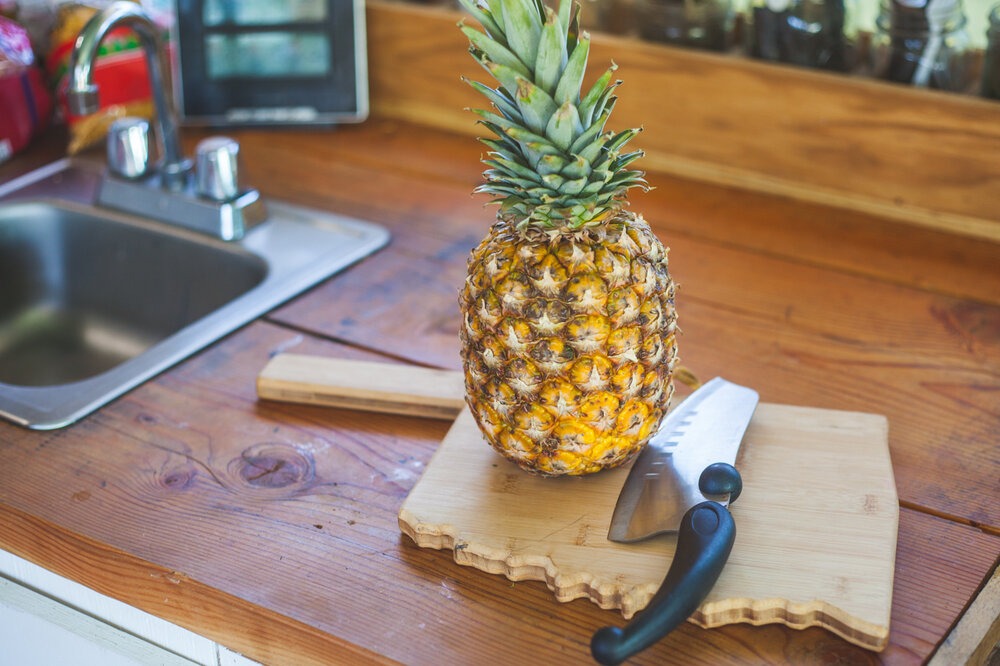
You see a juicy snack, overlanders see a projectile waiting to go airborne.
If there isn’t a secure home for every item in your RIG, it becomes a projectile.
This is more of a common issue with living and traveling in a large vehicle in general. When we first laid out our plans for the interior of the bus, we never knew that we would need and want so many cubbies, shelves, drawers, and hiding places for the miscellaneous junk that finds its way onto the bed every couple of days.
Who knew that sitting four or five Nalgene bottles under the kitchen table and driving down a twisting mountain road would cause a ruckus like you have never heard as the bottles tip, tumble, and fly around the cozy passenger compartment?
Since moving into our bus full-time we have added shelves, baskets, nets, and a few other containment solutions to keep our at-hand items from hitting us in the head on the freeway. When you see the #vanlifer on the ‘Grams with pictures hanging on the wall and glass mason jars on the counter with fresh flowers in them, understand that the scene before you is carefully crafted. And in the event that the vehicle in question is actually driven, those items are stowed somewhere or they are stowed everywhere.
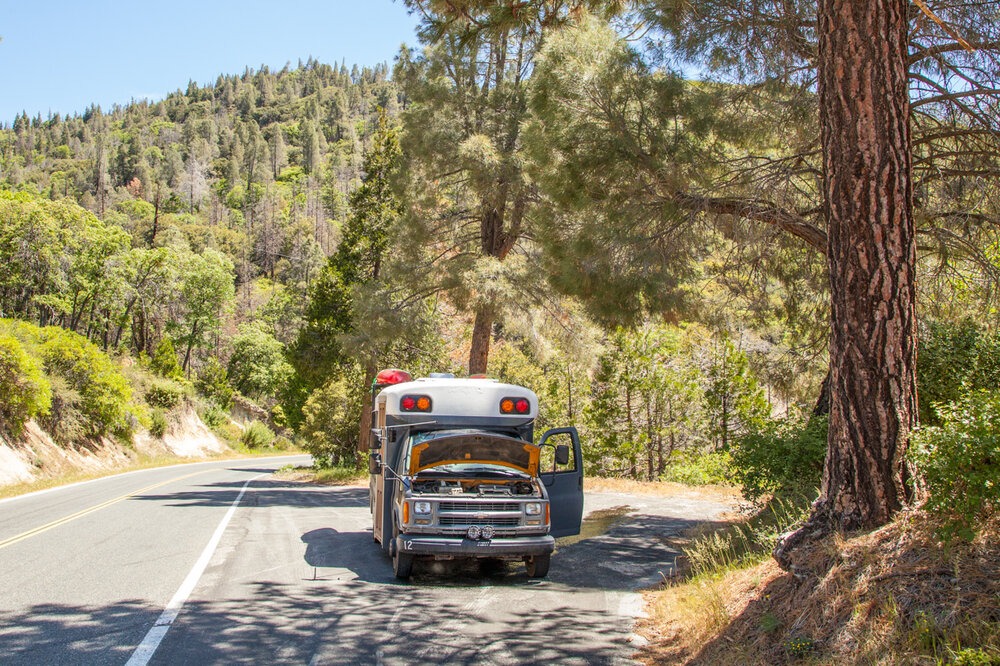
When something breaks (and it will break), Obscure vehicle parts are not always easy to come by, especially on the road.
We will use our bus as an example. Our bus is technically a 2000 Chevrolet 139-inch wheel-base Cutaway with a 6.5-liter turbocharged-diesel engine. This means we share a motor with a lot of different Chevy trucks, busses, vans, and even a few military and civilian HMMVV’s — and not much else.
So, when we need an air filter, we can just order one for the 6.5L and be done with it. Easy, peasy. However, when we needed to replace a home-welded trailer hitch in 2018 near Concrete, WA, we didn’t know what model to buy. If we search for the 2000 Chevy Express Van, which works with other parts, we will soon find out that the frame widths and construction were completely different between the two models and that our bus more closely resembles a full-size, heavy duty Chevy Pickup truck. The only challenge was then to find the model of Silverado with the same frame width as the bus, then order that model online, ship it general delivery to Concrete, WA, and install it in the post office parking lot with a cordless drill and hand tools. Conversely, if you were traveling in a five-year old Tacoma, you could stop in any off-road shop and walk out with an off-the-shelf hitch solution in a matter of a couple of hours.
Homework assignment: Go to your nearest parts store and tell the chap behind the counter that you need a driver’s door handle for a 2000 Chevy 139 Cutaway. Wait patiently, you will be there for a while.
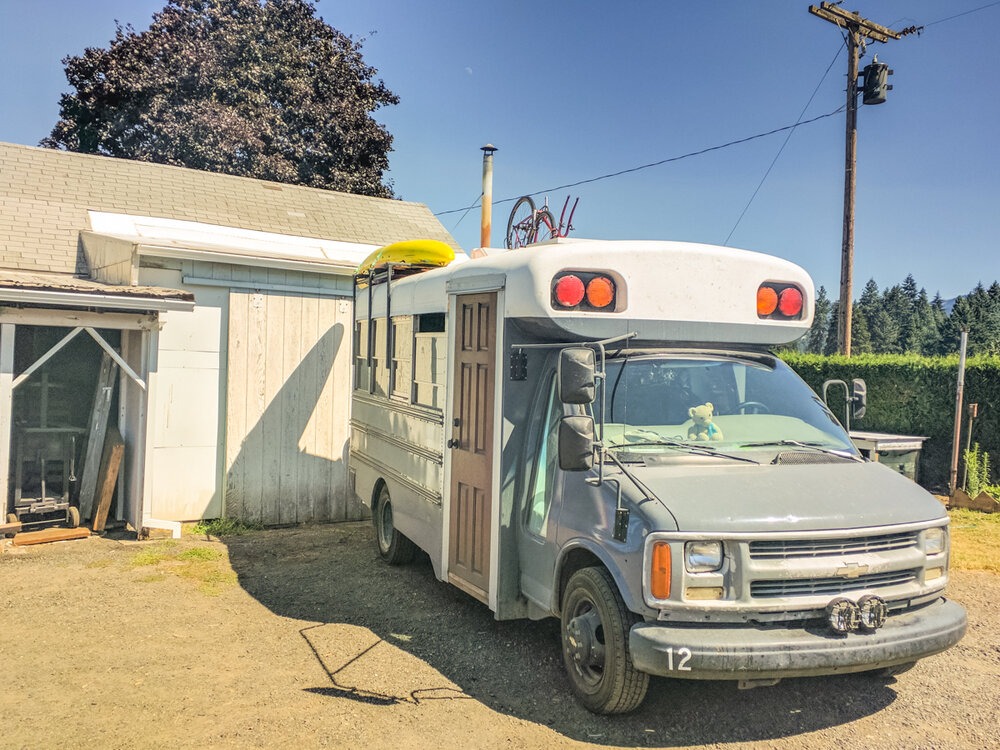
Finding a medium-duty mechanic isn’t always easy
Lastly, when you break down and the repair is above your skill level, finding a mechanic to work on a Skoolie is not easy. A lot of shops that we have spoken with during our travels won’t even touch our rig because it is a heavy-duty or medium-duty chassis, and therefore bigger than they want to mess with or bigger than they are capable of messing with.
In Oakhurst, CA in summer 2018, we needed a simple brake job done and didn’t feel comfortable replacing pads and shoes on a dirt forest service road in the Sierras. We contacted six shops and not a single one would even consider looking at our brakes. One even went as far as to tell us that the only way they would work on it is if they replaced the rotors too, at $215 a piece. We finally found a shop that had a cancellation and would fit us in, but it wasn’t cheap.
The journey continues
If you are still hanging on through all of that negative, I hope you have the chance to read Part 2 of this article. We are really happy with our choice to hit the road in our obscure and outlandish vehicle and we wouldn’t trade the experience for anything.
